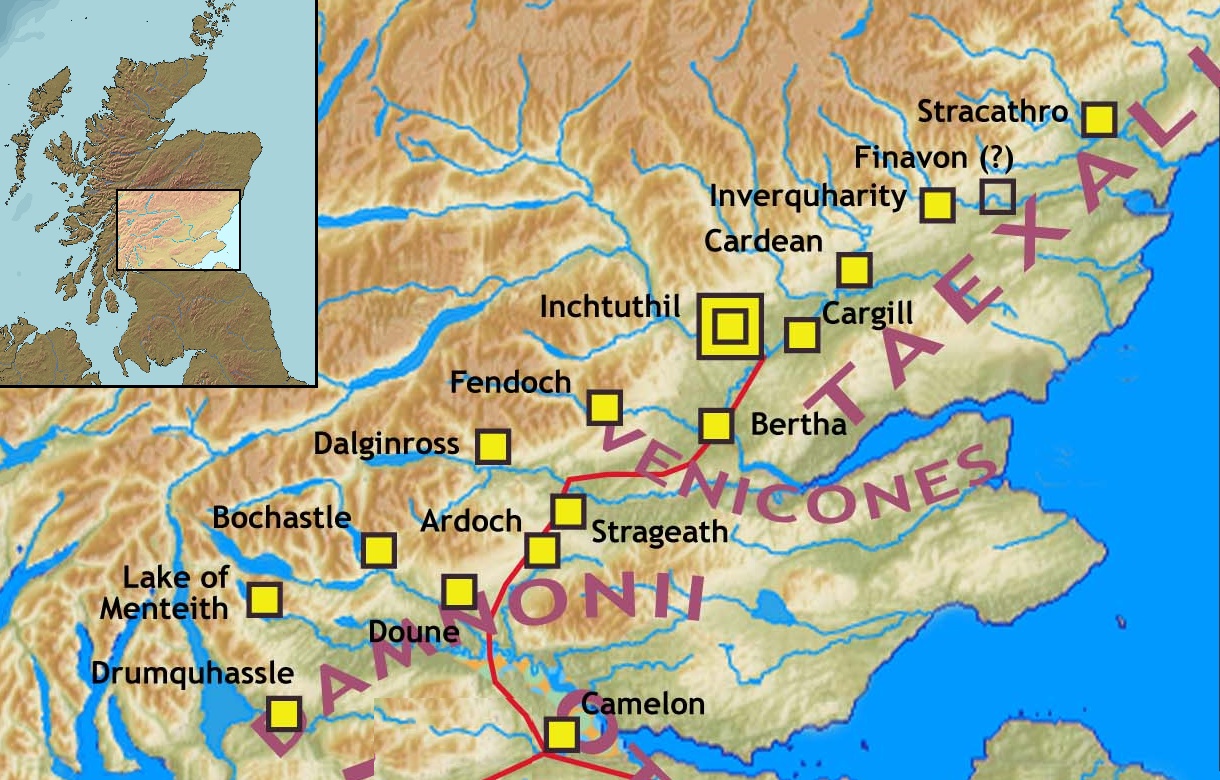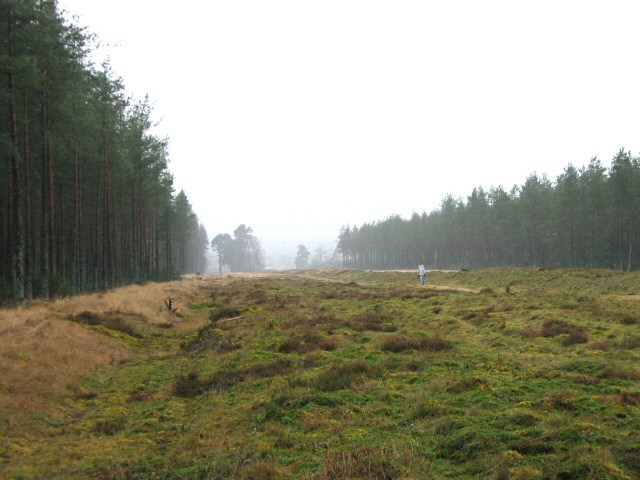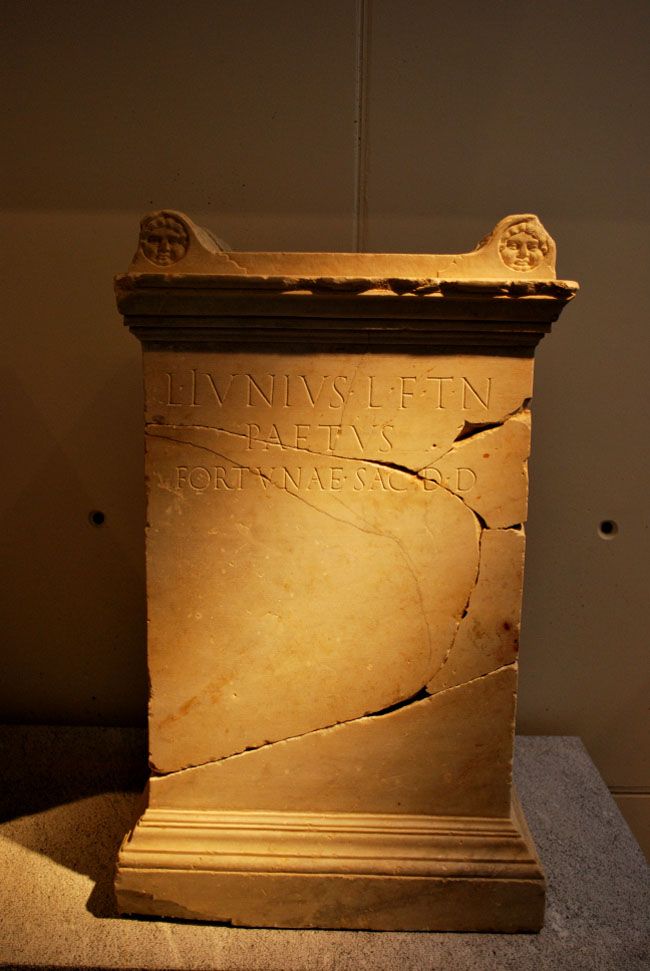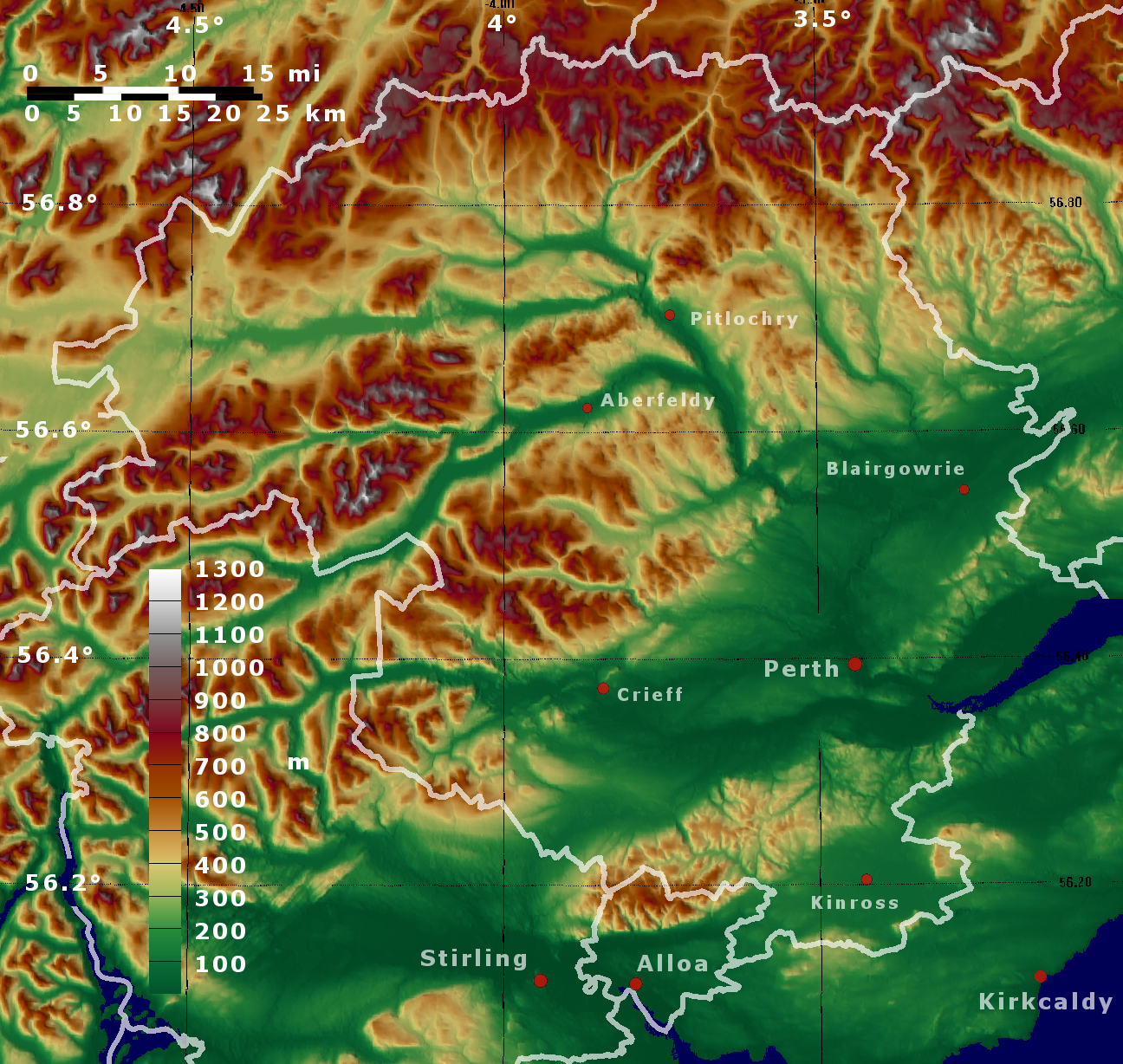|
Inchtuthil
Inchtuthil is the site of a Roman legionary fortress situated on a natural platform overlooking the north bank of the River Tay southwest of Blairgowrie, Perth and Kinross, Scotland (Roman Caledonia). It was built in AD 82 or 83 as the advance headquarters for the forces of governor Gnaeus Julius Agricola in his campaign against the Caledonian tribes. Positioned at the head of one of the main routes in and out of the Scottish Highlands, it was occupied by Legion XX ''Valeria Victrix'' and covered a total area of . Construction of the large fortress would have taken two or three seasons and a temporary camp was built nearby to house and protect the soldiers over the winter. Additional, smaller forts were built further north and south at the mouth of each nearby glen forming what are now referred to as the Glenblocker forts. The fort at Inchtuthil is thought to be part of the Glenblocker forts, as well as others in Strathmore, such as Cardean and Stracathro, formed a ... [...More Info...] [...Related Items...] OR: [Wikipedia] [Google] [Baidu] |
Gask Ridge
The Gask Ridge is the modern name given to an early series of Castra, fortifications, built by the Roman Empire, Romans in Scotland, close to the Highland Boundary Fault, Highland Line. Modern excavation and interpretation has been pioneered by the Roman Gask Project, with Birgitta Hoffmann and David Woolliscroft. The ridge fortifications: forts, fortlets and watchtowers were only in operation for a few years, probably fewer than ten. Name The name "Gask Ridge" refers to the ridge of land to the north of the River Earn in Perthshire. In Scottish Gaelic, a ''gasg'' is a projecting tail or strip of land. In the early 20th century, a line of Roman signal-towers (or watch-towers) was discovered along this ridge between the Roman forts of Strageath and Bertha (Perth), Bertha. History The Gask Ridge system was constructed sometime between 70 and 80 AD. Construction on Hadrian's Wall was started 42 years after completion of the Gask Ridge (from 122 to 130 AD), and the Antonine Wa ... [...More Info...] [...Related Items...] OR: [Wikipedia] [Google] [Baidu] |
Glenblocker Fort
The Gask Ridge is the modern name given to an early series of fortifications, built by the Romans in Scotland, close to the Highland Line. Modern excavation and interpretation has been pioneered by the Roman Gask Project, with Birgitta Hoffmann and David Woolliscroft. The ridge fortifications: forts, fortlets and watchtowers were only in operation for a few years, probably fewer than ten. Name The name "Gask Ridge" refers to the ridge of land to the north of the River Earn in Perthshire. In Scottish Gaelic, a ''gasg'' is a projecting tail or strip of land. In the early 20th century, a line of Roman signal-towers (or watch-towers) was discovered along this ridge between the Roman forts of Strageath and Bertha. History The Gask Ridge system was constructed sometime between 70 and 80 AD. Construction on Hadrian's Wall was started 42 years after completion of the Gask Ridge (from 122 to 130 AD), and the Antonine Wall was started 12 years after completion of Hadrian's Wall ... [...More Info...] [...Related Items...] OR: [Wikipedia] [Google] [Baidu] |
Blairgowrie And Rattray
Blairgowrie and Rattray () is a Twin cities (geographical proximity), twin burgh in Perth and Kinross, Scotland. Locals refer to the town as "Blair". Blairgowrie is the larger of the two former burghs which were united by an Act of Parliament in 1928 and lies on the southwest side of the River Ericht while Rattray is on the northeast side. Rattray claims to be the older and certainly Old Rattray, the area round Rattray Kirk, dates back to the 12th century. New Rattray, the area along the Boat Brae and Balmoral Road dates from 1777 when the River was spanned by the Brig o' Blair. The town lies on the north side of Strathmore, Angus, Strathmore at the foot of the Grampian Mountains. The west boundary is formed by the Knockie, a round grassy hill, and Craighall Gorge on the Ericht. Blairgowrie and Rattray developed over the centuries at the crossroads of several historic routes with links from the town to Perth, Scotland, Perth, Coupar Angus, Alyth and Braemar. The roads to Coup ... [...More Info...] [...Related Items...] OR: [Wikipedia] [Google] [Baidu] |
Sir Ian Richmond
Sir Ian Archibald Richmond, (10 May 1902 – 5 October 1965) was an English archaeologist and academic. He was Professor of the Archaeology of the Roman Empire at the University of Oxford. In addition, he was Director of the British School at Rome from 1930 to 1932, President of the Society for the Promotion of Roman Studies from 1958 to 1961, and Director of the Society of Antiquaries of London from 1959 to 1964. Early life Richmond was born on 10 May 1902 in Rochdale, Lancashire, England, alongside his twin brother. He was educated at Ruthin School, a public school in Ruthin, Denbighshire, Wales. In 1920, he began the study of classics at Corpus Christi College, Oxford. He achieved a third class in Mods in 1922 and a second class in Greats in 1924 of his '' Literae Humaniores'' degree. He spent the next two years studying at the British School at Rome. Academic career In 1926, following his studies, Richmond joined Queen's University Belfast as a lecturer in Classical Ar ... [...More Info...] [...Related Items...] OR: [Wikipedia] [Google] [Baidu] |
Legio XX Valeria Victrix
Legio XX Valeria Victrix, in English the Twentieth Victorious Valeria Legion, was a legion of the Imperial Roman army. The origin of the Legion's name is unclear and there are various theories, but the legion may have gained its title ''Valeria Victrix'' from a victory it achieved during the Great Illyrian revolt under the command of the general Marcus Valerius Messalla Messallinus. The legion had a boar as its emblem. History The legion was probably founded shortly after 31 BC by the emperor Augustus. XX ''Valeria victrix'' was probably part of the large Roman force that fought in the Cantabrian Wars in Hispania from 25 to 19 BC. The legion then moved to Burnum in Illyricum at the beginning of the Great Illyrian revolt (''Bellum Batonianum'') in AD 6. It is recorded operating against the Marcomanni in AD 6 in the army of Tiberius. In Illyria they were led by the governor of Illyricum, Marcus Valerius Messalla Messallinus, who may have given his clan (''gens'') name ' ... [...More Info...] [...Related Items...] OR: [Wikipedia] [Google] [Baidu] |
Castra
''Castra'' () is a Latin language, Latin term used during the Roman Republic and Roman Empire for a military 'camp', and ''castrum'' () for a 'Fortification, fort'. Either could refer to a building or plot of land, used as a fortified military base.. Included is a discussion about the typologies of Roman fortifications. In English language, English usage, ''castrum'' commonly translates to "Roman fort", "Roman camp" and "Roman fortress". Scholastic convention tends to translate ''castrum'' as "fort", "camp", "marching camp" or "fortress". Romans used the term ''castrum'' for different sizes of camps – including large Roman legion, legionary fortresses, smaller forts for Cohort (military unit), cohorts or for auxiliary forces, military camp, temporary encampments, and "marching" forts. The diminutive form ''castellum'' was used for fortlets, typically occupied by a detachment of a cohort or a ''centuria''. Etymology ''Castrum'' appears in Oscan language, Oscan and Umbrian ... [...More Info...] [...Related Items...] OR: [Wikipedia] [Google] [Baidu] |
Deva Victrix
Deva Victrix, or simply Deva, was a legionary castra, fortress and town in the Roman province of Britannia on the site of the modern city of Chester. The fortress was built by the Legio II Adiutrix, Legio II ''Adiutrix'' in the 70s AD as the Roman army advanced north against the Brigantes, and rebuilt completely over the next few decades by the Legio XX Valeria Victrix, Legio XX ''Valeria Victrix''. In the early 3rd century the fortress was again rebuilt. The legion probably remained at the fortress until the late 4th or early 5th century, upon which it fell into disuse. A civilian settlement, or ''canaba'', grew around the fortress. Chester's Chester Roman Amphitheatre, Roman Amphitheatre, south-east of the fortress, is the largest-known military amphitheatre in Britain. The civilian settlement remained after the Romans departed, eventually becoming the present-day city of Chester. There were peripheral settlements around Roman Deva, including Boughton, Cheshire, Boughton, t ... [...More Info...] [...Related Items...] OR: [Wikipedia] [Google] [Baidu] |
Aedes (Roman)
The vocabulary of ancient Roman religion was highly specialized. Its study affords important information about the religion, traditions and beliefs of the ancient Romans. This legacy is conspicuous in European cultural history in its influence on later juridical and religious vocabulary in Europe, particularly of the Christian Church. This glossary provides explanations of concepts as they were expressed in Latin pertaining to religious practices and beliefs, with links to articles on major topics such as priesthoods, forms of divination, and rituals. For theonyms, or the names and epithets of gods, see List of Roman deities. For public religious holidays, see Roman festivals. For temples see the List of Ancient Roman temples. Individual landmarks of religious topography in ancient Rome are not included in this list; see Roman temple. __NOTOC__ Glossary A abominari The verb ''abominari'' ("to avert an omen", from ''ab-'', "away, off," and ''ominari'', "to pronounce on an o ... [...More Info...] [...Related Items...] OR: [Wikipedia] [Google] [Baidu] |
Insula (Roman City)
The Latin word (; : ) was used in Roman cities to mean either a city block in a city plan (i.e. a building area surrounded by four streets) or later a type of apartment building that occupied such a city block specifically in Rome and nearby Ostia. The latter type of ''Insulae'' were known to be prone to fire and rife with disease. A standard Roman city plan was based on a grid of orthogonal (laid out on right angles) streets. It was founded on ancient Greek city models, described by Hippodamus Hippodamus of Miletus (; Greek: Ἱππόδαμος ὁ Μιλήσιος, ''Hippodamos ho Milesios''; c.480 BCE, 480–408 BC) was an ancient Greece, ancient Greek architect, urban planner, physician, mathematician, meteorologist and philosophe .... It was used especially when new cities were established, e.g. in Roman . The streets of each city were designated the '' decumani'' (east–west-oriented) and '' cardines'' (north–south). The principal streets, the ''decumanus m ... [...More Info...] [...Related Items...] OR: [Wikipedia] [Google] [Baidu] |
Praetorium
The Latin term ''praetorium'' (also and ) originally identified the tent of a general within a Roman '' castrum'' (encampment), and derived from the title praetor, which identified a Roman magistrate.Smith, William. Dictionary of Greek and Roman Antiquities, 2 ed., s.v. "Praetorium". London: John Murray, 1872. Originally, praetor ("leader") was the title of the ranking civil servant in the Roman Republic, but later identified a rank of office below the rank of consul. The war-council meetings held in the tent of a general gave administrative and juridical meanings to the term ''praetorium'', a usage continued into the Byzantine Empire, where the term identified the residence of the governor of a city. The term also designated the headquarters of the Roman emperor, as well as the camp of the Praetorian Guard stationed in Rome. Description Due to the number of uses for the word ''praetorium'', it is difficult to describe; a ''praetorium'' could be a large building, a permane ... [...More Info...] [...Related Items...] OR: [Wikipedia] [Google] [Baidu] |
Perth And Kinross
Perth and Kinross (; ) is one of the 32 council areas of Scotland, and a Lieutenancy areas of Scotland, lieutenancy area. It is bordered by Highland (council area), Highland and Aberdeenshire to the north, Angus, Scotland, Angus, Dundee, and Fife to the east, Clackmannanshire to the south, and Stirling (council area), Stirling and Argyll and Bute to the west. Geographically the area is split by the Highland Boundary Fault into a more mountainous northern part and a flatter southern part. The northern area is a popular tourist spot, while agriculture makes an important contribution to the southern part of the area. The area is run by Perth and Kinross Council, which is based in Perth, Scotland, Perth. History The area takes its name from the two historical Shires of Scotland, shires of Perthshire and Kinross-shire. Each was administered by a Sheriff principal, sheriff from medieval times, supplemented by Commissioners of Supply, commissioners of supply from 1667 and then by a ... [...More Info...] [...Related Items...] OR: [Wikipedia] [Google] [Baidu] |
Legio II Adiutrix
Legio II Adiutrix ("Second Legion, the Rescuer") was a Roman legion, legion of the Imperial Roman army founded in AD 70 by the emperor Vespasian (r. 69–79), originally composed of Roman navy marines of the ''classis Ravennatis''. There are still records of II ''Adiutrix'' in the Rhine border in the beginning of the 4th century. The legion's symbols were a Capricorn (astrology), Capricorn and Pegasus. History The first assignment of II ''Adiutrix'' was in Germania Inferior, where the Batavian rebellion was at its peak. After the defeat of the rebels, II ''Adiutrix'' followed general Quintus Petillius Cerialis to UK, Britain to deal with another rebellion led by Venutius. During the next years, the legion was to stay in the British Islands to subdue the rebel tribes of Scotland and Wales, with base camp probably at Deva Victrix, Chester. In 87, the legion was recalled to the continent to participate in the Dacian wars of emperor Domitian. Between 94 and 95, still in Dacia, later ... [...More Info...] [...Related Items...] OR: [Wikipedia] [Google] [Baidu] |









